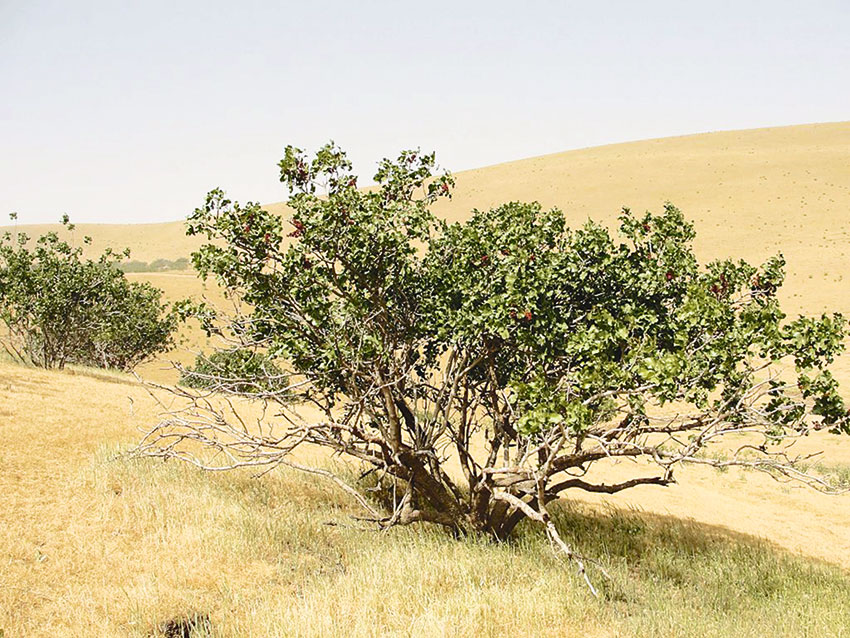The afforested hills in Bikrova, approaching the southern outskirts of the capital, are low: only 200-300 metres above sea level. The earliest and mature forest plantations are concentrated on a vast area up to the Kopetdag ridge. The hills begin to “swell” and “dive” down behind the last row of cottages – the foothill start there. The botanical rarities lined up near the country road – mulberry trees, popularly called “han tut”, its fruits are juicy and full of “cherry-raspberry” juice, Ziziphus, pecan trees and Elaeagnus orientalis, and pistachio trees can be seen behind them. If you climb higher, you can see that there are many of them – a large grove, about 50 mature trees. The trees are in excellent condition and demonstrate their unpretentiousness to soils and lack of irrigation in a semi-wild landscape. Certainly, the seedlings were looked after, watered and kept nourished during their early years.
When walking amongst the trees, the country’s oldest forester Akmurad Atamuradov, a specialist in pistachio cultivation, explained that the grove consists of female and male trees, the female trees bear large fruits, large clusters result from the crossing with large-fruited forms. The first trees were planted experimentally 15 years ago. Today, the outdoor botanical collection has grown wide, it includes the species from Iran, China and Turkey and the local species cultivated using the foreign methods – by grafting seedling to wild sprouts. It should be noted that the pistachio tree behaves like a real drought-resistant xerophyte among the local forest-forming species. Therefore, the result of the involvement of this species in landscaping vividly illustrates its advantage over others: the expansion of pistachio plantings will be followed by the protection of soils from degradation and the support for biodiversity conservation efforts. In this regard, the vast foothills of the Kopetdag Mountains are practically virgin land to develop the barren hills for the plantations of nut crops, including sweet almonds. More than half a million hectares could potentially be afforested, providing quality assessment of the parent pairs, preserving the wild genetic pool and taking care for young trees. In Turkmenistan, scientists have identified a total of ten varietal forms in man-made and natural pistachio plantations that are promising for reproduction. The domestic business sector also got interested in growing this species, the first industrial plantings appeared a little more than five years ago. These plantations will bring the first yield within the current decade.

